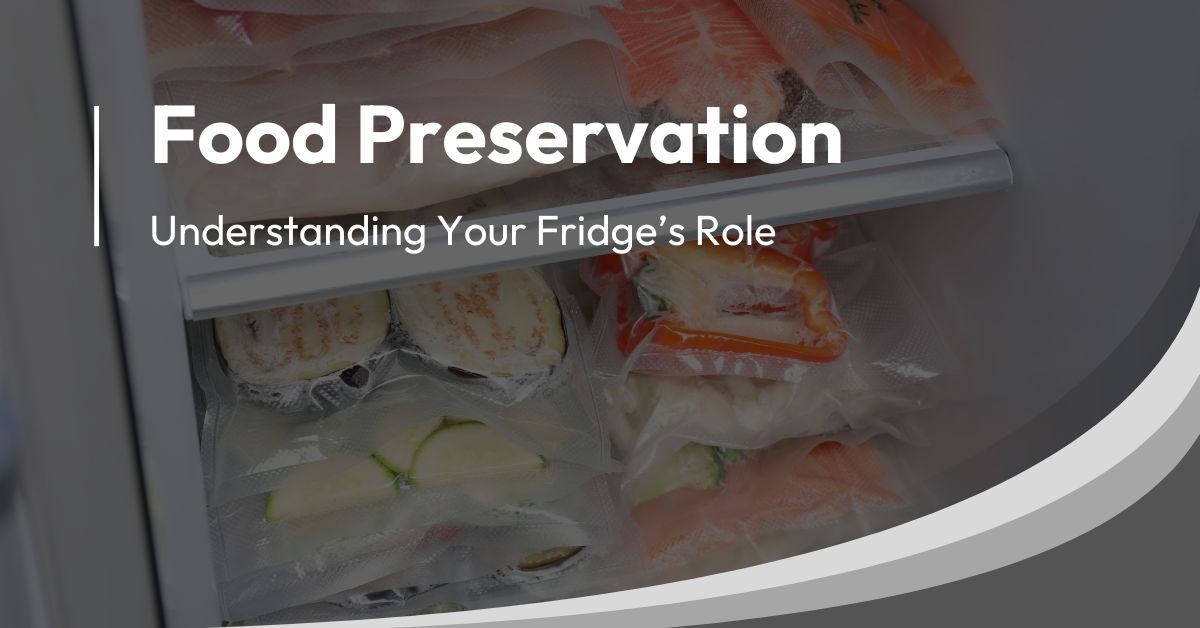Have you ever wondered how your refrigerator keeps your food fresh? It’s not just about cold air—it’s a fascinating interplay of temperature, humidity, and biochemistry. In this scientific explainer, we’ll dive deep into the world of food preservation and uncover the crucial role your fridge plays in keeping your meals safe and delicious.
The Basics of Food Spoilage
Before we can understand preservation, we need to know what causes food to spoil. There are four main culprits:
- Microorganisms: Bacteria, yeasts, and molds that can grow on food.
- Enzymes: Naturally occurring proteins that continue to break down food after harvest or slaughter.
- Oxidation: Reaction with oxygen that can cause rancidity in fats and color changes.
- Temperature: Higher temperatures accelerate all of the above processes.
How Refrigeration Preserves Food
Your refrigerator combats these spoilage factors in several ways:
1. Slowing Microbial Growth
- Temperature Control: Most bacteria grow fastest between 40°F and 140°F (4°C to 60°C). By keeping foods below 40°F, your fridge significantly slows bacterial growth.
- Fact: Some bacteria, like Listeria, can still grow at refrigerator temperatures, which is why proper food handling is crucial.
2. Reducing Enzyme Activity
- Cold Temperatures: Enzymes work more slowly in cold environments, reducing the rate of food breakdown.
- Example: This is why bananas ripen more slowly in the fridge.
3. Minimizing Oxidation
- Enclosed Environment: Your fridge limits exposure to oxygen, slowing oxidation processes.
- Humidity Control: Many fridges have crisper drawers that maintain higher humidity, which helps preserve fruits and vegetables by preventing water loss.
4. Controlling Moisture
- Condensation Management: Fridges are designed to manage moisture levels, preventing excess water that could promote bacterial growth.
- Note: This is why it’s important not to overpack your fridge, as it can disrupt airflow and moisture control.
The Science of Optimal Fridge Temperatures
Different types of food require different storage conditions for optimal preservation:
Meat and Fish (32°F to 36°F / 0°C to 2°C)
- Why: These temperatures slow bacterial growth without freezing the food.
- Tip: Store in the coldest part of your fridge, often the bottom shelf.
Dairy (36°F to 40°F / 2°C to 4°C)
- Science: Slightly warmer temperatures prevent freezing while still inhibiting bacterial growth.
- Note: Butter can be stored at slightly higher temperatures due to its low water content.
Fruits and Vegetables (Various)
- Ethylene-Producing Fruits (apples, pears): 30°F to 32°F (-1°C to 0°C)
- Ethylene-Sensitive Vegetables (leafy greens): 32°F to 36°F (0°C to 2°C)
- Why: Ethylene is a ripening hormone. Separating producers from sensitive foods prevents premature ripening.
Eggs (33°F to 40°F / 0.5°C to 4°C)
- Fact: Storing eggs at consistent temperatures prevents temperature fluctuations that can allow bacteria to penetrate the shell.
Advanced Preservation Techniques in Modern Fridges
Modern refrigerators employ several advanced techniques to enhance food preservation:
1. Multi-Zone Cooling
- How it Works: Separate cooling systems for the fridge and freezer allow for more precise temperature control.
2. Air Purification Systems
- Science: Some fridges use ethylene absorbers or ionizers to remove bacteria and odors from the air.
3. Blue Light Technology
- Innovation: Some crisper drawers use blue LED lights to encourage photosynthesis in vegetables, potentially extending their shelf life.
4. Smart Sensors
- Tech: Advanced fridges use sensors to detect temperature fluctuations and adjust cooling as needed.
The Role of Packaging in Fridge Preservation
Proper packaging works in tandem with your fridge to preserve food:
- Airtight Containers: Limit oxygen exposure and prevent cross-contamination.
- Vacuum Sealing: Removes air, significantly extending shelf life.
- Breathable Produce Bags: Allow ethylene to escape while maintaining moisture.
Conclusion: Your Fridge as a Preservation Powerhouse
Understanding the science behind food preservation empowers you to make the most of your refrigerator. By storing foods at their optimal temperatures and using the right preservation techniques, you can extend the life of your groceries, reduce food waste, and ensure the safety of your meals.
Remember, while your fridge is a powerful tool in food preservation, it works best when combined with proper food handling and storage practices. Use the accompanying infographic as a quick reference guide to optimal fridge storage, and turn your refrigerator into a true preservation powerhouse!


 How to Conduct a DIY Fridge Energy Audit: Save Energy and Money
How to Conduct a DIY Fridge Energy Audit: Save Energy and Money
Leave a Reply